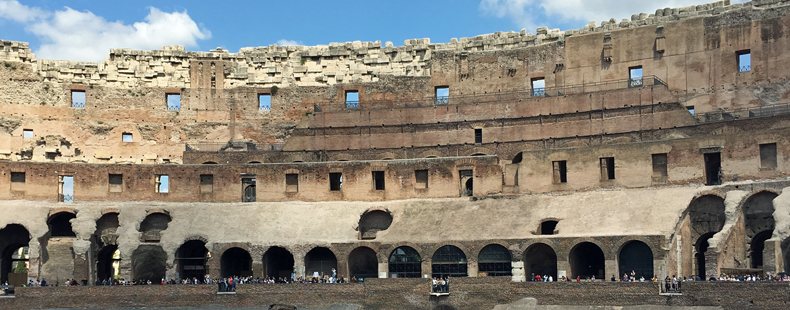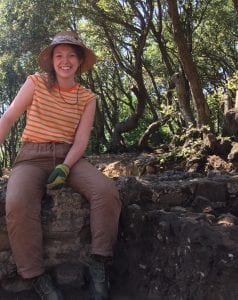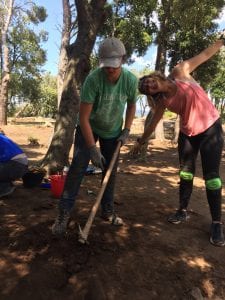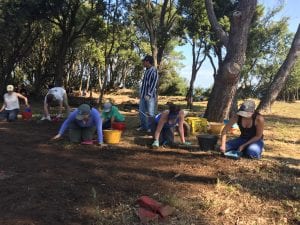This is the seventh in a series of blog posts from Whitties studying on Whitman’s Crossroads: Rome, Italy: Landscape and Cityscape in Ancient Rome program this summer with Professor Kate Shea. Laura Jessich ’20 is an Art, Art History & Visual Culture Studies major.
When I see ancient roman pottery in a museum I think about gloved hands and quiet voices, noses in books and careful dusting. But these ideas came to an abrupt halt for the last portion of the trip. After walking 8-13 miles a day in Rome we were all pretty grateful to be heading to the country side and the beach. We ended up savoring those precious r&r moments more than I expected. We were met in Populonia by our lead archaeologist, Carolina, your typical Italian boss-woman, dressed entirely from head to toe in hot pink. After securing us food and shelter Carolina set out to fulfill our next rung on Maslows’s ladder: dirt. So much dirt. We spent the next week sweeping dirt, troweling dirt, digging dirt, collecting dirt, examining, carrying, dumping, heaving, breathing dirt. At the end of our 8 days our discoveries were totaled at a handful of green roman glass, some pieces of amphora’s are other varies kitchen ware, a brass hook, a plastic army man, and 100+ roof tiles.
Archaeology is way different than I thought, and honestly it mostly consists of cleaning. Our team of 18 people spent the first two days cleaning an area the size of a couple dorm rooms. Before we could start excavation we had to clear all the leaves, pull grass, cut roots, and collect rocks until our site was just plain brown soil. Then we finally started excavating. Think of the most inefficient way you could remove dirt from pile and there you have archaeology. Like having to mow your lawn with only scissors, we scraped away dirt layer by layer. Under the constant watch of Carolina and her other three amazing archaeologist we learned how to carefully uncover the fallen history of our villa. We were so lucky to learn from such talented, passionate, and unique people. Not to mention our site was by far the most pleasant of all we visited. Perched on the edge of Baratti Bay, we caught the ocean breeze in a wooded area that stretch up the coast.
The Villa of Poggio del Molino has an incredible complicated and overlapping history. It was first a fortress after the Punic wars that produced iron. After the Augustan era in 27AD construction began that transformed the building into an agricultural villa. It was used to produce fish sauce, an expensive delicacy for the ancient Romans. In its last phase it became a maritime villa with a full roman bath. This time is characterized by beautiful mosaics. The most remarkable of which depicts Medusa, but it had to be recovered due to fear vandalism.
Carolina’s mission is to change the way the community interacts with and views archaeology. The opportunity for us to work at this site was due to her decade of efforts to involve volunteers from all over the world in uncovering this keyhole into history. Usually digs are dominated by universities and inaccessible to the public, but Carolina seeks to change that approach and make it known that sites like these are part of everyone’s history.



